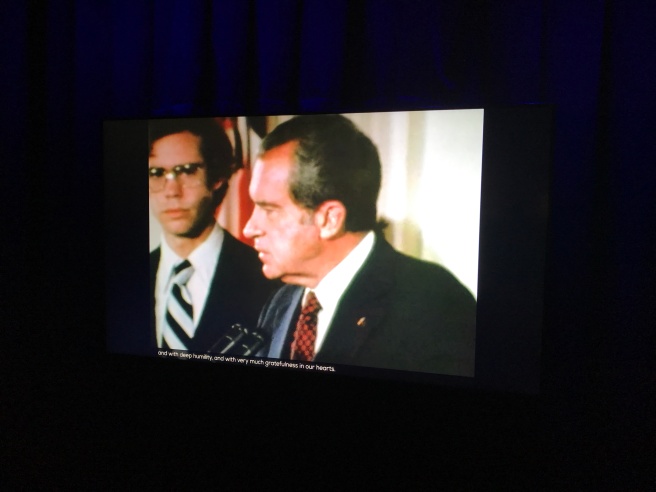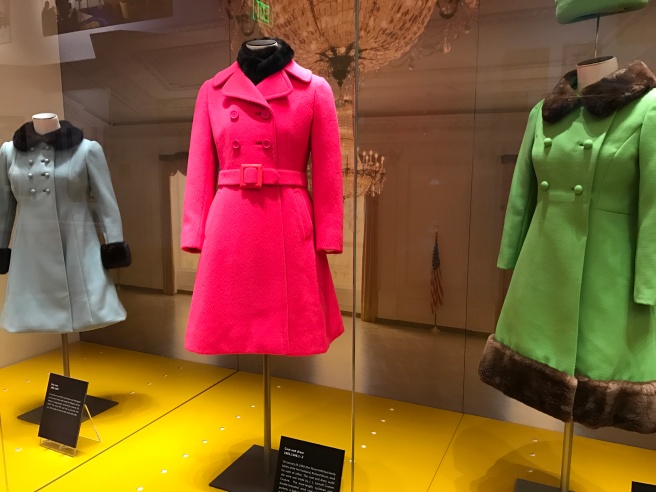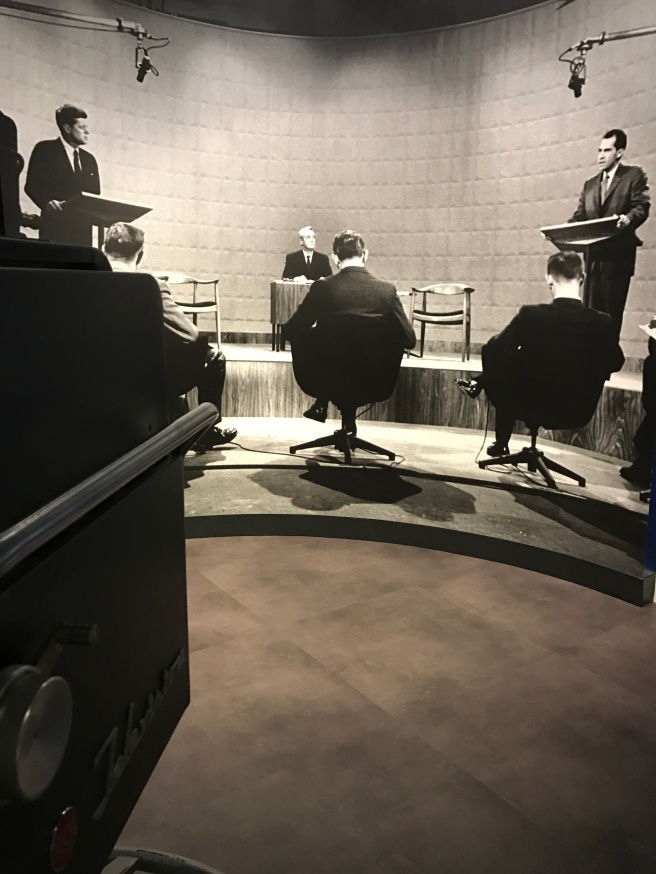
Sometimes, the present and the past intersect in a way that is both shocking and frightening. Did we ever think that in 2017, we would be waging a massive fight for civil rights, women’s rights and gay rights? That after this nation was founded by people fleeing religious persecution in Great Britain, and then made culturally and intellectually richer by immigrants from just about every country on the face of the planet, the U.S. executive branch would flout the Constitution and turn its back on immigrants on the basis of religion and ethnicity? That not only would a presidential candidate encourage Russian hacking of his opponent, but that we would wonder how much influence Russia ended up having in our presidential election? If you think back to two years ago, could you have imagined the scenario we now find ourselves in? Not in my worst nightmare could I have imagined it, and yet here we are. Fortunately, though, history is very informative and instructive in times like these. Even though this is a surprising and uncomfortable situation for most of us, it isn’t the first time the foundation of this country has been rocked.

The most obvious parallel to our current national crisis is the Watergate scandal of the Nixon administration. Here is Wikipedia’s description of Watergate in its most basic terms: “Watergate was a major political scandal that occurred in the United States in the 1970s, following a break-in at the Democratic National Committee (DNC) headquarters at the Watergate office complex in Washington, D.C., in 1972 and President Richard Nixon’s administration’s attempted cover-up of its involvement.” I’m no Nixon or Watergate scholar, to be sure, but it always seemed to me that Watergate was a wholly self-inflicted wound. Nixon was a highly intelligent man and a skilled politician who won the White House twice, and his victory in 1972 was a landslide. So why did he go rogue and authorize the recording of senior officials starting as early as 1969 (he was concerned about leaks), and then approve the break-ins and their subsequent cover-ups? Most experts agree that he had a fatal flaw: paranoia. Which led to vindictiveness (Sound familiar?). The difference this time around is that the current resident of 1600 Pennsylvania isn’t a skilled politician or diplomat; actually, he isn’t really qualified for his position at all. Working as a “businessman” hardly prepares a person for the presidency of the United States. So I’m thinking there will be a big difference between his presidency and Richard Nixon’s. I’m guessing there will be no great international achievements by the current administration (Think of Nixon’s opening up diplomatic relations with China. Heck, if anything, the current president could erase 45 years of progress in our relations with China). No major social progress (Nixon coined the term “War on Drugs” and enforced the desegregation of Southern schools). No great environmental gains (Nixon established—established!—the Environmental Protection Agency (EPA) and signed into law the Clean Air Act and National Environmental Policy Act). And most likely no significant gains for women that are supported by the administration (Nixon was a proponent of the Equal Rights Amendment–A Republican! In favor of women’s rights! How times have changed.). On top of all this, the current occupant of the White House, while being less prepared and intellectually equipped than Nixon, is also more insecure, more petty, more malicious–a bad combination that most likely means he will stop at nothing to hang on to every last shred of power he has, whether through lying, cheating or obstructing justice. But we can still take the lessons learned from Watergate and apply them here: Initial revelations aren’t the story. The story is much deeper. Keep digging. And don’t relent.

Even though California has voted solidly Democratic in every presidential election since 1992, the two presidents produced by California have been Republican (Wikipedia says Herbert Hoover is associated with California, but that is based solely on his attending Stanford and working in Gold Country for a spell afterward; my feeling is that that doesn’t count.). So the presidential libraries that exist in California (Southern California, to be more specific) honor those Republican presidents: the 37th, Richard Milhous Nixon, and the 40th, Ronald Wilson Reagan. I had visited the Ronald Reagan Presidential Library in 2007 or 2008, and I enjoyed the experience. The showstopper for me was the Air Force One Pavilion, which houses a full-size, decommissioned Air Force One used by seven U.S. presidents. The plane faces out toward a three-story glass wall framing a view of the mountains beyond. It’s an impressive space. A full-size replica of the Oval Office as it looked when Reagan was in office was also a highlight of the visit.
I of course knew that Richard M. Nixon was from Southern California, but I wasn’t really aware that his birthplace was Yorba Linda and that his library and museum were located there until probably eight years ago—right around the time I saw the movie Frost/Nixon, which piqued my interest in Nixon and his early history. In thinking about the places I wanted to visit for A Year in L.A., the Nixon Museum was a no-brainer. And after the election in November, the visit became a must-see sooner rather than later. When I first thought about going last summer, I discovered that the Richard Nixon Presidential Library and Museum was in the middle of a $15 million renovation. Reports mentioned that the museum’s exhibits were being completely modernized and made more interactive, and were going to take better advantage of the library’s archives of presidential documents and artifacts. They also said the reimagined museum wouldn’t be a shrine to Nixon, but, rather, a balanced look at his life and career. This sounded all the more intriguing.


I had done some research on the childhood home, so I knew that the Nixons had lived in a very modest house in a citrus grove, and that the house had been built from a kit by Richard Nixon’s father. The family grew lemons early on. There was a certain charm to the origin story. I could imagine their hardscrabble life in early 1900s California. That this young boy from very uncertain circumstances would later become the president of the United States was amazing in and of itself. And maybe something of his family’s story–a reversal of fortune that necessitated a move to another Southern California town and rocked the family’s equilibrium–led to a certain insecurity that would manifest later in his life. It seems like those feelings of inferiority caused some deep-seated resentments.
When I finally saw the family home in person, I was struck by how small and humble it was. The house was a two-bedroom home with a loft where the younger children slept, and it had no indoor bathroom. Richard Nixon was born in that house to Francis and Hannah Milhous Nixon on January 9, 1913. Nixon was the second of five brothers. Two of those brothers died fairly young, and in 1922, when the lemon farming faltered, the Nixons moved in with relatives of Hannah’s in Whittier, California. Frank opened a gas station/grocery store there, and the entire family worked there to support themselves.
At the Nixon Library and Museum, you can tour the childhood home, then walk a few hundred feet and end up standing right next to the helicopter that whisked Nixon away on his final day in office, after he resigned to avoid impeachment.

The helicopter was also used by several other U.S. presidents: JFK, Johnson and Ford. The placement of the house and helicopter so close together on the grounds was beyond poignant: both symbols of early hopefulness (a new home that housed a new family and was the hub of a lemon farm; a helicopter that once ferried a new president from place to place) and hopelessness (the home, abandoned when the citrus farm failed; the helicopter carrying a fallen-from-grace Nixon away from Washington). Nixon recounted in later writings that Pat Nixon kept repeating “It’s so sad; it’s just so sad” to no one in particular as he and his wife were airlifted away from the White House for the final time.
Between the house and the museum lies a garden with the graves of both Richard and Pat Nixon. It is impossible not to feel the weight of history here and throughout the site. And of course a certain melancholy.

But going through the museum is a reminder that Nixon’s presidency wasn’t just about Watergate and disappointment. There are displays focusing on his two campaigns, sure, and also exhibits chronicling the current events leading up and beyond his first term of office: social change, the assassinations of Robert Kennedy and Martin Luther King Jr., the Vietnam War.
And then, much like at the Reagan Library, there’s a re-creation of the Oval Office as it existed during Nixon’s time in office, along with artifacts from that period. During Nixon’s presidency, Pat Nixon led an effort to fill the White House with American furniture and artwork, and she also pushed for lighting the exterior of the building itself at night—which occurred for the first time on November 25, 1970, and continues to this day.
The Lincoln sitting room was Nixon’s favorite space in the White House, and there is a special exhibit at the museum devoted to this.

The Nixon Library also has a replica of the White House East Room, a grand space with chandeliers, silk draperies, marble fireplaces and all the accoutrements. The space can be rented for weddings and other special events.
There are photographs of Elvis meeting Nixon in the Oval Office. Elvis wanted to help in the War on Drugs.

And there’s a large and effective exhibit on the momentous visit to China.

Plus an homage to the space program. The first walk on the moon occurred in 1969, during Nixon’s first term, by the astronauts of Apollo 11. Nixon supported a shift from the Apollo missions to the Space Shuttle program, a legacy that continued until 2011. (The International Space Station seems to have become NASA’s focus in the last few years.)

There’s an exhibit of clothing worn by Pat Nixon and her daughters, Tricia Nixon and Julie Nixon Eisenhower, for the 1969 inauguration.

But the biggest exhibit, naturally, is devoted to Watergate and the president’s eventual resignation. I could have spent hours reading the placards in this room, but fortunately, the Nixon Foundation website contains much of that information. And countless books and articles have been written about this period, so there’s no dearth of literature on the subject.
At this point, the curators of the museum take visitors back in time, to Nixon’s high school and college life, his first job at a law firm, his marriage, his early political career. Shocking fact: Nixon won a full-tuition scholarship to Harvard, but, according to the Nixon Foundation website, his family couldn’t afford to pay for his travel and living costs, so he went to Whittier College instead. The exhibits here also cover his World War II service, his time with the Office of Price Administration, his election to the House of Representatives, and, eventually, the Senate–and his vice presidency under Eisenhower.

There’s also a re-creation of the TV studio in which the 1960 presidential debate with John F. Kennedy took place—the one that famously may have cost Nixon that election.

Displays devoted to Nixon’s post-presidential life, when he was able to burnish his image somewhat, round out the story. He wrote ten books after his presidency ended, and he also acted as a mentor to other U.S. presidents and world leaders.
The hallway leading to the exit chronicles the deaths of Pat and Richard in 1993 and 1994, respectively.

The museum was truly a full-circle experience: a journey. It was a sobering, poignant and invigorating glimpse at one of the most important, iconic and reviled figures of the last century. He had so many accomplishments–accomplishments that will always be slightly tarnished by his transgressions. And one can’t help but wonder what type of man, and president, he might have been if he hadn’t lost two brothers, if his family’s lemon farm hadn’t failed, if he had been able to go to Harvard. These are the major traumas that shaped him and informed the decisions he would make later in life. One could argue that without these events, he might have been a more secure individual and therefore a better leader. But then again, without those obstacles, would he have been so hungry, so desperate to prove his worth? Without those formative experiences, he would have been better adjusted, better liked, and most likely not the 37th president of the United States. He was a fascinating tragic figure. And it made me wonder what lies in store for us today. Are we going to have that Watergate moment? That departure by helicopter? It’s some measure of our current state of affairs that this is something we’re hoping for.
The past and present were definitely in play at the Nixon Library and Museum. As I left, I had the overwhelming feeling that it was just so sad.



























